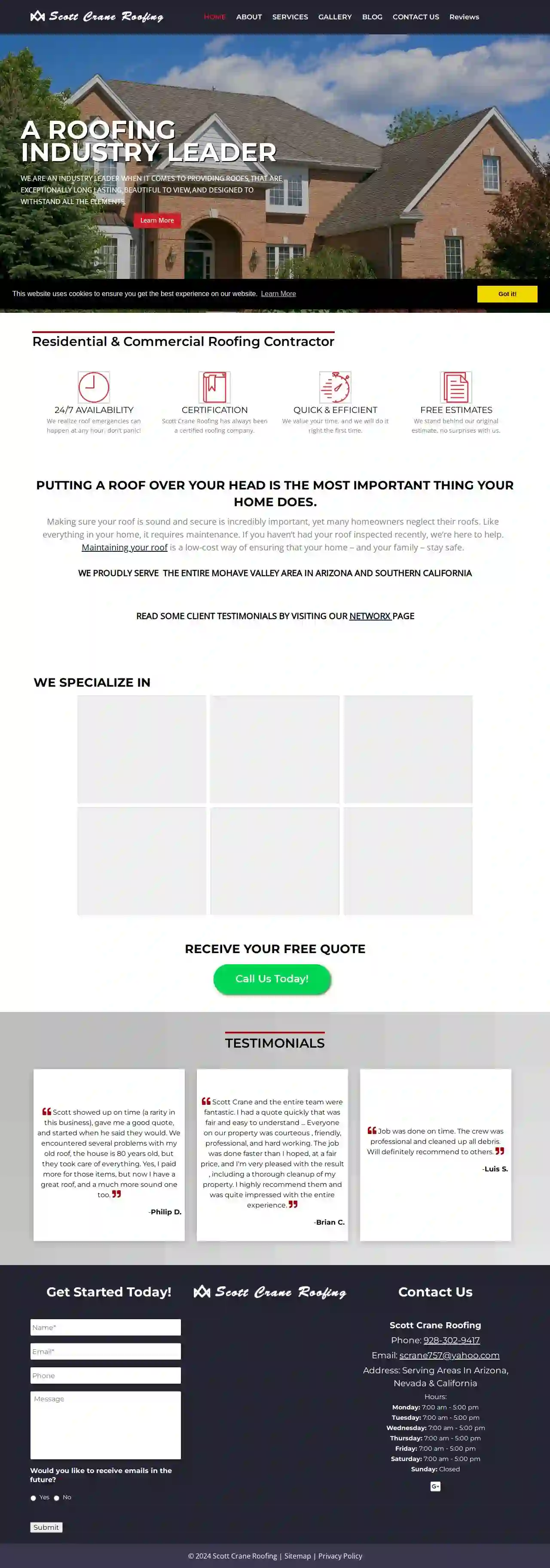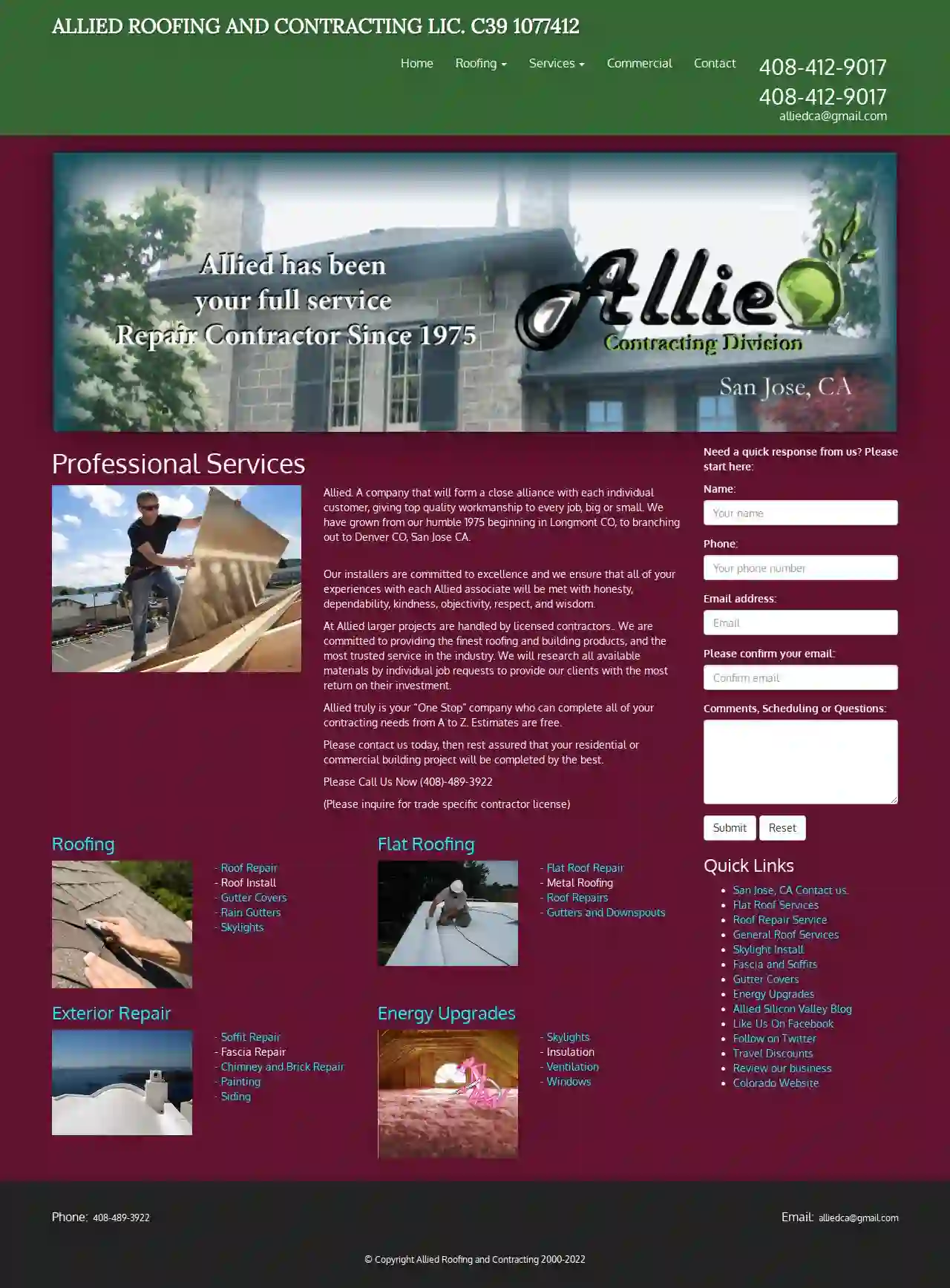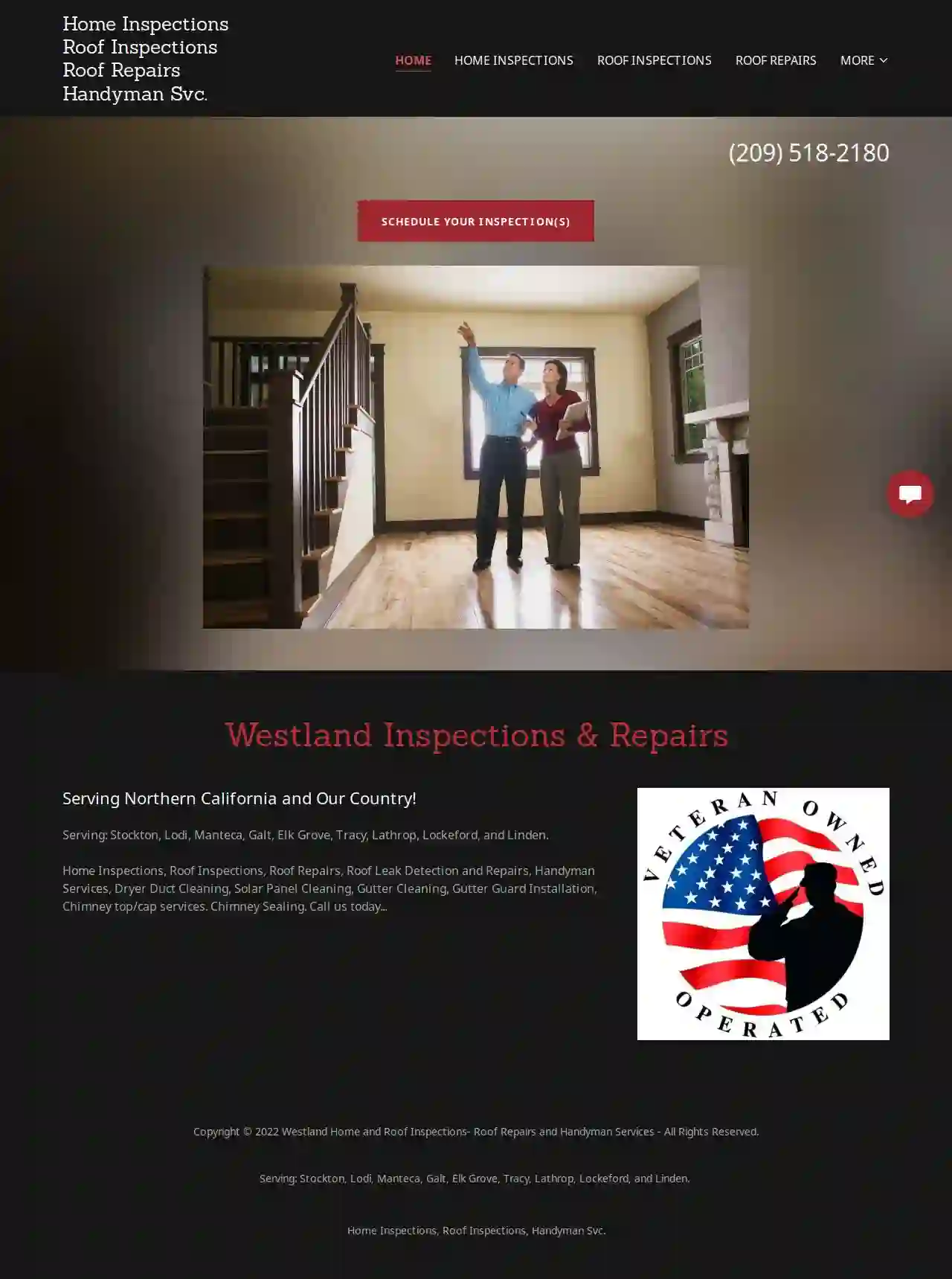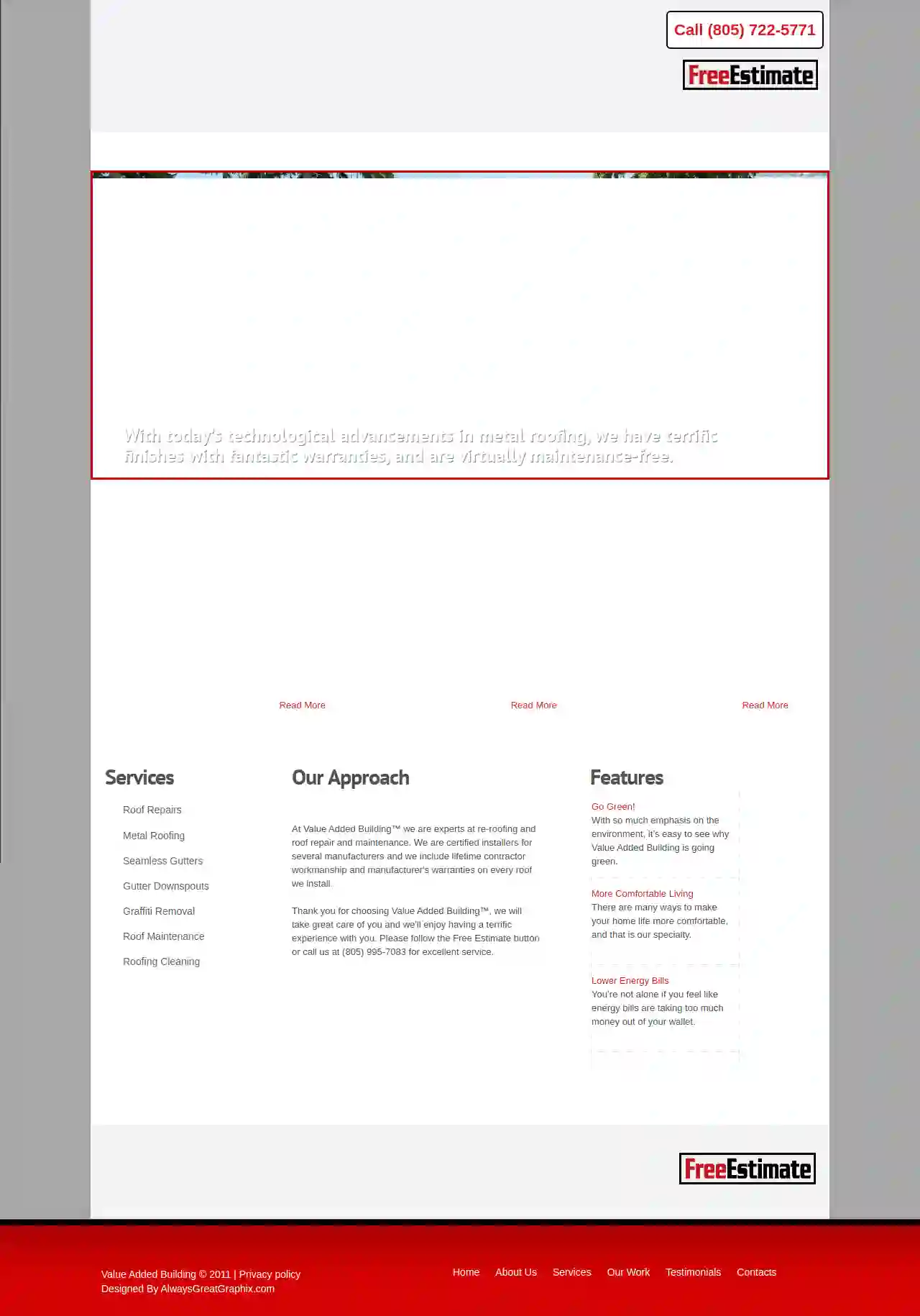Flat Roof Installers Riverside
Top 10 Flat Roofing Contractor in Riverside
Get 3 FREE Flat Roof Installation quotes for your project today! Compare profiles, reviews, accreditations, portfolio, etc... and choose the best offer.

C&G New Generation Roofing Inc
530 reviews14770 Bear Valley Rd, Suite 100, Victorville, 92392, USWith over 30 years of experience in the Victorville roofing industry, at C&G New Generation Roofing we have repaired and restored every type of roof. If you are looking for a roofing company in Victorville who can offer you a complete range of solutions at the best price, you are at the right place. At C&G New Generation Roofing we pride ourselves on our premier roofing services that always deliver quality and comprehensive work for all our clients. We understand roofs and we understand our customers, and that’s why we are the leaders in High Desert roofing industry.
- Services
- Why Us?
- Gallery
Get Quote
Mighty Dog Roofing
524 reviews10001 Midlothian Turnpike, Richmond, VA, 23220, USYour house or business is more than a structure – it's your sanctuary, your livelihood, and nothing protects it better than a sturdy roof. Mighty Dog Roofing is here to be your property's best friend by offering a range of roofing and exterior services to keep things safe, secure, and looking great!From emergency roof repairs and replacements to various siding, skylight, gutter, and window services, our roofers and exterior experts have you covered! Don't worry about juggling multiple contractors – Mighty Dog Roofing has your back with our single-provider solution. We have led the industry for over 20 years, providing top-notch service and craftsmanship to homeowners and businesses throughout the country. Our commitment to excellence is reflected in our Mighty Watchdog Warranty, which provides peace of mind knowing your investment is protected.
- Services
- Why Us?
- Accreditations
- Our Team
- Testimonials
- Gallery
Get Quote
United Frontier Roofing
53 reviews123 Main St, West Hills, 91304, USUnited Frontier Roofing is a licensed, bonded, and insured roofing company based in West Hills, CA. We serve all of Los Angeles County and surrounding areas. As a reputable high-end company, we take pride in providing lasting solutions through superior craftsmanship and roofing materials. Our services include roof inspection, installation, replacement, emergency repair, and more. We understand that replacing your roof is an investment in your home and future. We offer a wide range of roofing materials, including asphalt shingles, clay, slate, and concrete tile. Our team is dedicated to excellence and promises to offer you the best roofing solutions for your home. Request a free estimate today!
- Services
- Why Us?
- Accreditations
- Gallery
Get Quote
Roofing Master LB
52 reviewsLong Beach, CA, USRoofing Masters Long Beach is a trusted roofing company serving Long Beach, CA. We specialize in providing high-quality roofing solutions for both residential and commercial properties. Our team of experienced professionals is dedicated to delivering exceptional service and ensuring customer satisfaction. We offer a comprehensive range of roofing services, including new roof installation, roof repair, re-roofing, and roof maintenance. We understand the importance of a durable and reliable roof, and we strive to exceed your expectations with our workmanship and attention to detail.
- Services
- Why Us?
- Testimonials
- Gallery
Get Quote
Scott Crane Roofing
54 reviewsNot Specified, USWe are an industry leader when it comes to providing roofs, that are exceptionally long lasting, Beautiful to view, and designed to withstand all the elements. Making sure your roof is sound and secure is incredibly important, yet many homeowners neglect their roofs. Like everything in your home, it requires maintenance. If you haven’t had your roof inspected recently, we’re here to help. Maintaining your roof is a low-cost way of ensuring that your home – and your family – stay safe. WE PROUDLY SERVE THE ENTIRE MOHAVE VALLEY AREA IN ARIZONA AND SOUTHERN CALIFORNIA
- Services
- Why Us?
- Accreditations
- Our Team
- Testimonials
- Gallery
Get Quote
Young's Roofing
52 reviews1165 Revere Ave. Suite A., San Francisco, 94124, USYoung's Roofing Inc. provides the Bay Area with unsurpassed professionalism, customer service, and beautiful roofs that last a lifetime. Whether working on a residential or commercial project, our commitment to quality craftsmanship and customer satisfaction is what makes us one of the Bay Area's leading roofing providers. With competitive pricing, free estimates and access to previous customer references; you can rest assured that you are getting the best value in the Bay Area. We take pride in offering the highest QUALITY service and workmanship.
- Services
- Why Us?
- Accreditations
- Testimonials
- Gallery
Get Quote
Crespo Roofing
54 reviews3000 James Road, STE 103, Bakersfield, 93308, USCrespo Roofing is a family-owned and operated business that has been in the roofing industry since 1994. We provide a comprehensive set of roofing services, including residential and commercial roofing, roof repair and maintenance, and roof replacement and installation. Our team is highly skilled and qualified, with valuable roofing experience. We offer free roof estimates and guide clients on the best roof coating and maintenance options for their needs. We also believe in giving back to the community and support various events and organizations that focus on the welfare of Bakersfield and surrounding communities.
- Services
- Why Us?
- Our Team
- Gallery
Get Quote
Allied Roofing
57 reviews580 Continental Dr., San Jose, 95111, USAllied Roofing and Contracting is a company dedicated to building strong relationships with each customer, providing top-quality workmanship for every project, big or small. Since our humble beginnings in 1975 in Longmont, CO, we've expanded to serve Denver, CO, and San Jose, CA. Our installers are committed to excellence, ensuring every interaction with an Allied associate is marked by honesty, dependability, kindness, objectivity, respect, and wisdom. For larger projects, we work with licensed contractors. We're committed to using the finest roofing and building materials and providing the most trusted service in the industry. We research all available materials for each job to ensure our clients get the best return on their investment. Allied is your one-stop shop for all your contracting needs, from A to Z. Estimates are free. Contact us today and rest assured your residential or commercial building project will be completed by the best.
- Services
- Why Us?
- Accreditations
- Gallery
Get Quote
Westland Home & Roof Inspections- Roof Repairs, and Handyman Services
563 reviewsServing: Stockton, Lodi, Manteca, Galt, Elk Grove, Tracy, Lathrop, Lockeford, and Linden., Serving Northern California and our country!, CA, USWestland Inspections & Repairs is a reputable company serving Northern California and our country! We offer a wide range of services, including home inspections, roof inspections, roof repairs, roof leak detection and repairs, handyman services, dryer duct cleaning, solar panel cleaning, gutter cleaning, gutter guard installation, and chimney top/cap services. Our team is dedicated to providing exceptional service and ensuring your home is safe and secure. With years of experience, we have built a reputation for being reliable, efficient, and professional. Contact us today to schedule your inspection and let us help you achieve your home maintenance goals.
- Services
- Why Us?
- Gallery
Get Quote
Value Added Building
52 reviewsNA, 805-722-5771, Ventura, 93001, USValue Added Building is a company specializing in re-roofing, roof repair, and maintenance. They are certified installers for several manufacturers and offer lifetime workmanship and manufacturer warranties on all installations. The company emphasizes expertise in clay tile and metal roofs, providing competitive pricing and hands-on management at job sites. They also offer services like seamless gutters, gutter downspouts, graffiti removal, roof repairs, roof maintenance, and roof cleaning. Their commitment to quality and customer service is evident in their approach to every project, ensuring customer satisfaction and long-lasting results.
- Services
- Why Us?
- Accreditations
- Our Team
- Testimonials
- Gallery
Get Quote
Over 17,196+ Roofers onboarded
Our roofing contractors operate in Riverside & beyond!
Roofyng.com has curated and vetted Top Roofers arround Riverside. Find the most reliable pro today.
Flat Roof Installation FAQs
- Visual Inspection: Thoroughly examine the roof surface for any signs of damage, ponding water, or areas where the membrane is compromised.
- Water Testing: Carefully spray sections of the roof with water to observe if it penetrates the membrane. This helps pinpoint the leak's location.
- Infrared Scanning: A professional roof inspector can use infrared cameras to detect temperature differences on the roof surface, indicating areas where moisture is present.
What is a roof tear-off?
What is the best way to find a flat roof leak?
Can I install a flat roof myself?
What is a roof overlay (recover)?
What is a roof tear-off?
What is the best way to find a flat roof leak?
- Visual Inspection: Thoroughly examine the roof surface for any signs of damage, ponding water, or areas where the membrane is compromised.
- Water Testing: Carefully spray sections of the roof with water to observe if it penetrates the membrane. This helps pinpoint the leak's location.
- Infrared Scanning: A professional roof inspector can use infrared cameras to detect temperature differences on the roof surface, indicating areas where moisture is present.